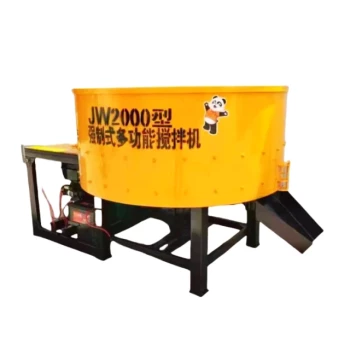Introduction
Selecting the right mixer for material processing can make or break your workflow—especially when dealing with tough ingredients like ice or dense meats. Flat-mouth mixers are popular for their versatility, but they have clear power limitations that could leave you struggling with demanding tasks. This guide breaks down exactly where these mixers excel, when to consider high-powered alternatives, and how to balance cost with performance for your specific needs.
Understanding Flat-Mouth Mixer Power Limitations
How Motor Capacity Impacts Ingredient Compatibility
Flat-mouth mixers typically feature motors ranging from 300W to 800W, ideal for light to medium tasks like blending soft fruits or mixing dough. However, their design prioritizes wide-mouth convenience over raw power.
Key limitations include:
- Struggles with hard materials: Motors under 500W may stall when crushing ice or grinding fibrous meats.
- Overheating risks: Extended use with dense ingredients can trip thermal protection circuits.
- Reduced efficiency: Thicker mixtures (e.g., nut butters) require frequent stopping to scrape sides.
Ever wondered why your mixer smokes when processing frozen fruit? The motor’s torque—not just wattage—determines its ability to handle resistance.
Ice and Meat Processing: Thresholds for Success
For occasional ice crushing or small batches of ground meat (under 1 lb), a 700W+ flat-mouth mixer might suffice if:
- Ingredients are pre-cut into small chunks.
- You use pulse settings to avoid motor strain.
- Mixing sessions are kept short (under 2 minutes).
But for regular heavy-duty tasks, even high-wattage flat-mouth models risk premature wear.
Beyond Flat-Mouth Mixers
High-Powered Alternatives for Demanding Tasks
When flat-mouth mixers fall short, consider these alternatives:
-
Commercial-Grade Blenders (1000W+):
- Feature reinforced blades and cooling systems for sustained ice crushing.
- Example: Garlway’s industrial blenders handle 5 lbs of meat per batch without overheating.
-
Dedicated Meat Grinders:
- Offer specialized auger systems for uniform texture.
- More cost-effective than overpowering a general-use mixer.
-
Variable-Speed Food Processors:
- Provide precise control for emulsifying or kneading dense doughs.
Did you know? A 1200W commercial blender processes ice 40% faster than an 800W flat-mouth model while using less energy per batch.
Cost-to-Performance Tradeoffs in Appliance Selection
| Tool | Best For | Avg. Cost | Lifespan (Heavy Use) |
|---|---|---|---|
| Flat-mouth mixer | Sauces, light dough | $50–$200 | 1–3 years |
| Commercial blender | Ice, nut butters | $200–$600 | 5+ years |
| Meat grinder | Raw meat, jerky | $80–$300 | 4–7 years |
For businesses processing hard materials daily, investing in a specialized tool (e.g., Garlway’s heavy-duty grinders) reduces long-term repair costs.
Conclusion: Matching Your Needs to the Right Tool
Flat-mouth mixers shine for everyday tasks but hit their limits with hard or bulky materials. Before buying:
- Audit your workload: Estimate how often you’ll process tough ingredients.
- Prioritize durability: Commercial-grade tools save money over repeated replacements.
- Consider space: Dedicated appliances (like grinders) free up your mixer for lighter tasks.
For construction-scale material processing (e.g., cement mixing), explore Garlway’s industrial-grade machinery designed for continuous heavy loads. The right tool doesn’t just get the job done—it saves time, energy, and frustration.
Related Products
- Ready Mixer Machine for Construction Ready Mix Machinery
- Commercial Construction Mixer Machine for Soil Cement Mixing Concrete
- Auto Concrete Cement Mixer Machine New
- Construction Products Concrete Plant Machine Mixing Concrete Mixer
- HZS90 Large Multiquip Concrete Mixers for Construction
Related Articles
- Optimizing Concrete Mixer Safety: How Proactive Tire and Suspension Maintenance Prevents Catastrophic Failures
- How to Maintain Hydraulic Systems in Concrete Mixers: A Safety-Focused Guide
- How to Choose the Right Concrete Type for Every Construction Challenge
- How to Build an OSHA-Compliant Safety System for Concrete Mixer Workspaces
- How to Conduct OSHA-Compliant Concrete Mixer Inspections: A Safety-First Checklist




















